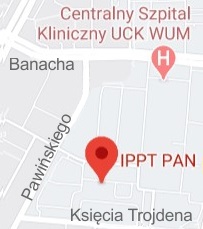| 1. |
Liu X.♦, Jin S.♦, Ming M.♦, Fan C.♦, Liu H.♦, Politis D.J.♦, Kopeć M., A high throughput in-situ measurement of heat transfer in successive non-isothermal forming of sheet alloys,
Journal of Manufacturing Processes, ISSN: 1526-6125, DOI: 10.1016/j.jmapro.2024.08.048, Vol.129, pp.77-91, 2024 Abstract:
The measurement and control of the heat transfer of sheet alloys in successive non-isothermal forming cycles is crucial to achieve the desired post-form properties and microstructure, which could not as of yet be realized by using traditional test facilities. In the present research, a novel heat transfer measurement facility was designed to generate and subsequently measure the in-situ heat transfer from a sheet alloy to multi-mediums such as forming tools, air, lubricant and coating. More importantly, the facility was able to use a single sheet alloy sample to perform successive non-isothermal forming cycles, and subsequently obtain high throughput experimental results including the temperature evolution, cooling rate, mechanical properties and microstructures of the alloy. The high throughput in-situ heat transfer measurement facility identified that the cooling rate of AA7075 was 152 °C/s and the mechanical strength was over 530 MPa in the 1st forming cycle. However, it decreased to less than the critical value of 100 °C/s in the successive 10th forming cycle, leading to a low mechanical strength of only 487 MPa. The identified variations that occur in the successive non-isothermal forming cycles would improve the consistency and accuracy of part performance in large-scale manufacturing. Keywords:
High throughput in-situ measurement,Heat transfer,Successive non-isothermal forming,Sheet alloys,Microstructure Affiliations:
| Liu X. | - | Imperial College London (GB) | | Jin S. | - | other affiliation | | Ming M. | - | other affiliation | | Fan C. | - | other affiliation | | Liu H. | - | Imperial College London (GB) | | Politis D.J. | - | Imperial College London (GB) | | Kopeć M. | - | IPPT PAN |
|  |
| 2. |
Liu Z.♦, Moreira R.A., Dujmović A.♦, Liu H.♦, Yang B.♦, Poma A.B., Nash M.A.♦, Mapping mechanostable pulling geometries of a therapeutic anticalin/CTLA-4 protein complex,
Nano Letters, ISSN: 1530-6984, DOI: 10.1021/acs.nanolett.1c03584, Vol.22, pp.179-187, 2022 Abstract:
We used single-molecule AFM force spectroscopy (AFM-SMFS) in combination with click chemistry to mechanically dissociate anticalin, a non-antibody protein binding scaffold, from its target (CTLA-4), by pulling from eight different anchor residues. We found that pulling on the anticalin from residue 60 or 87 resulted in significantly higher rupture forces and a decrease in koff by 2–3 orders of magnitude over a force range of 50–200 pN. Five of the six internal anchor points gave rise to complexes significantly more stable than N- or C-terminal anchor points, rupturing at up to 250 pN at loading rates of 0.1–10 nN s^–1. Anisotropic network modeling and molecular dynamics simulations helped to explain the geometric dependency of mechanostability. These results demonstrate that optimization of attachment residue position on therapeutic binding scaffolds can provide large improvements in binding strength, allowing for mechanical affinity maturation under shear stress without mutation of binding interface residues. Keywords:
atomic force microscopy, protein engineering, single-molecule force spectroscopy, mechanical anisotropy, click chemistry, Go̅-Martini model, PCA Affiliations:
| Liu Z. | - | other affiliation | | Moreira R.A. | - | IPPT PAN | | Dujmović A. | - | other affiliation | | Liu H. | - | Imperial College London (GB) | | Yang B. | - | other affiliation | | Poma A.B. | - | IPPT PAN | | Nash M.A. | - | other affiliation |
|  |
| 3. |
Liu X.♦, Di B.♦, Yu X.♦, Liu H.♦, Dhawan S.♦, Politis D.J.♦, Kopeć M., Wang L.♦, Development of a Formability Prediction Model for Aluminium Sandwich Panels with Polymer Core,
Materials, ISSN: 1996-1944, DOI: 10.3390/ma15124140, Vol.15, No.12, pp.4140-1-12, 2022 Abstract:
In the present work, the compatibility relationship on the failure criteria between aluminium and polymer was established, and a mechanics-based model for a three-layered sandwich panel was developed based on the M-K model to predict its Forming Limit Diagram (FLD). A case study for a sandwich panel consisting of face layers from AA5754 aluminium alloy and a core layer from polyvinylidene difluoride (PVDF) was subsequently conducted, suggesting that the loading path of aluminium was linear and independent of the punch radius, while the risk for failure of PVDF increased with a decreasing radius and an increasing strain ratio. Therefore, the developed formability model would be conducive to the safety evaluation on the plastic forming and critical failure of composite sandwich panels. Keywords:
formability, M-K model, failure criteria, composite sandwich panel Affiliations:
| Liu X. | - | Imperial College London (GB) | | Di B. | - | Imperial College London (GB) | | Yu X. | - | Imperial College London (GB) | | Liu H. | - | Imperial College London (GB) | | Dhawan S. | - | Imperial College London (GB) | | Politis D.J. | - | Imperial College London (GB) | | Kopeć M. | - | IPPT PAN | | Wang L. | - | Imperial College London (GB) |
|  |



















